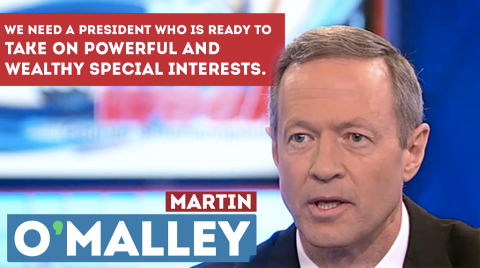A few months ago, sensing the GOP may have up to 15 candidates in the race, I wrote about how the Republican presidential primary debates should be structured. With the addition of several candidates over the last month – I have 15 now listed on my sidebar – that may become a reality.
So the question is how these debates will be structured. According to Matea Gold in the Washington Post, Fox News will only take the top 10 in an average of national polls for their debates, while CNN will do the same with a twist – giving the bottom-feeders their own forum as well.
And forum seems to be a more operative word because there are a number of issues these candidates will agree on. Of course, the moderators (with the possible, but doubtful, exception of Fox News) will likely concentrate on the issues they perceive will create the most “gotcha” moments for the Democrat’s campaign to exploit – look for questions on social issues, repealing the most popular aspects of Obamacare, and “tax cuts for the rich” to lead the way, along with trying to get the candidates to throw George W. Bush under the bus.
My thoughts on the contenders buying their way into a debate and splitting the field into three (or more) groups, randomly selected, is one thing. But commentator Dan Calabrese believes in the flip side: “Get rid of the debates. They’re stupid.”
These meat parades are about the silliest spectacles ever to rear their heads in politics, and let us count the reasons this is true:
1. They are not debates. A debate is an argument between two people who disagree about something, or about many things. These are attention-grabbing contests in which each person on stage is trying to convince you of the same thing – that he/she is the true conservative, the true heir to Reagan, the true believer in small government, the real tax-cutter, whatever. Or they’re looking for the opportunity to say that someone else on stage (or maybe everyone else in stage) is not those things. I’m not sure what you call that, but I know what it isn’t, and that’s a debate.
2. The media should have no role in this performance theater, and certainly not as the “moderators.” Having them there simply makes it a glorified joint press conference, but it’s a bizarre press conference in which the people holding the press conference have no idea what they’re there to talk about, because the media could ask them about anything from Syria to health care to boxers vs. briefs. (And they will.) When the media rides its hubris for all it’s worth, you remember the media more than you remember the candidates. Bernard Shaw. Candy Crowley. Unless they want to run, get them off the stage.
3. Momentary anomalies come to define candidates in ways that should never happen. Rick Perry was the worst victim of this I ever saw. A momentary mental block kept him from recalling one of the three cabinet-level departments he had proposed eliminating, and the brain freeze was instantly seized upon as the end of his campaign. Which it was. That was crap. Say what you want about whether Perry would make a good president, but anyone can lose their train of thought in a moment, and what usually happens is you say to someone, “Hey, I’m having a mental block, what was that thing?” And they tell you, and you say oh yeah, and that’s that. It has nothing to do with your ability to do the job of president, nor does your reaction to someone’s zinger or a brief look of surprise that someone decides to call a “deer in the headlights moment.” These isolated events are stupid and irrelevant, and yet they are used to define you by people who are stupid and should be irrelevant.
4. We never learn anything. In fact, we often come away from a debate more ignorant than we were when it started. If you want to know a candidate’s position on something, go to his web site. If you want to know the legitimate criticisms of him, research that independently. If you judge anyone – positively or negatively – based on what they can say for themselves in a span of 30 seconds, you should be disqualified from voting.
I’ve often said that a candidate can’t (and shouldn’t) be judged on a 30-second commercial, but the sad fact is that a majority of voters do just that. It definitely bothers me because I lay a lot of time and effort into the process of selecting my candidate based on how they address the issues I care about and document my search – unfortunately I reach but a tiny fraction of the voters even one 30-second spot on a cable news network would (with the possible exception of MSNBC, where my readership may match their viewership.) Even if a half-million people actually watch the GOP debates, all the negative statements and gaffes (like Perry’s) are immediately beamed to a much larger audience.
Yet if we don’t have these forums, there is the question of whether certain issues would be addressed. I realize this can lead to pandering to a particular audience, which is a complaint I’ve had with some local forums such as the NAACP ones, but at least it’s understood going in that the audience will be listening for the answers to their particular concerns. If I had a forum, I’m sure I would ask a certain roster of questions, too, and sometimes when I attend these events I indeed have my questions asked.
So there’s really no fair process in place. Eventually the problem will work itself out to the extent that a few candidates will be out before the leaves change color, but Calabrese has a point.
My contention and wish, though, is that people do their due diligence in determining who they would vote for. I don’t think this was done sufficiently in the last two Presidential elections, so look at what we got. Granted, neither John McCain nor Mitt Romney may have been the answer, either, but I think we hardly could have done worse. Go back to 2007 and I can tell you why.




